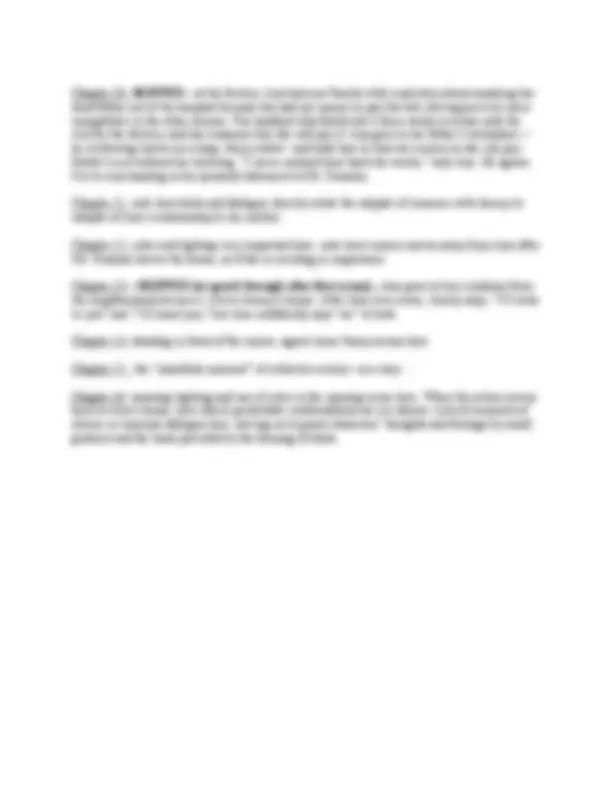



Study with the several resources on Docsity

Earn points by helping other students or get them with a premium plan


Prepare for your exams
Study with the several resources on Docsity

Earn points to download
Earn points by helping other students or get them with a premium plan
Community
Ask the community for help and clear up your study doubts
Discover the best universities in your country according to Docsity users
Free resources
Download our free guides on studying techniques, anxiety management strategies, and thesis advice from Docsity tutors
A viewing guide for the film 'real women have curves' (2002) by patricia cardoso. It includes film analysis units, recurring techniques and visual motifs, and literary questions to help students engage with the film. The guide covers chapters and omitted scenes, offering summaries and insights.
Typology: Exams
1 / 3

This page cannot be seen from the preview
Don't miss anything!


LIT 80N, Fall 2008 Latino Expressions VIEWING GUIDE: REAL WOMEN HAVE CURVES HBO Films, 2002; dir. Patricia Cardoso; screenwriters George LaVoo and Josefina López; based on a play by Josefina López Cast: America Ferrera as Ana; Lupe Ontiveros as her mother Carmen; Ingrid Oliu as her sister Estela; Jorge Cervera as her father Raúl; George López as her teacher Mr. Guzmán Filmed on location in East LA/Boyle Heights Some important units of filmic analysis:
LIT 80N, Fall 2008 Latino Expressions VIEWING GUIDE: REAL WOMEN HAVE CURVES Specific notes on chapters, and descriptions of omitted chapters: [NOTE: “chapter” is not a legitimate category for a filmmaker, who thinks in terms of the whole storyboard, and shots/scenes/sequences. Rather, it is artificially imposed by the format of the DVD for the purposes of easier scene selection by the consumer. Since we will have to skip some parts to make this 90 minute film fit into our 70 minute class, I’ve given summaries of the omitted “chapters.”] Chapter 1: note establishing shots of LA and Ana’s neighborhood; lots of shots of her walking along the street that will be echoed throughout the film. Pay attention to language usage here: who speaks Spanish when, and why they might switch to English. Chapters 2-3: gender roles; leaving Dad’s truck and the world of men to go to the world of women; importance of chisme [gossip] to Carmen; characters accusing each other of being overly melodramatic: “estás exagerada” Chapter 4: SKIPPED —Carmen worries that Estela is already 29 and will never marry, so she sets her sights on Ana marrying instead, putting faith in a statue of San Antonio to help bring this about. Scene of Abuelo [grandfather] eating tuna [cactus fruit], telling a tall tale about hidden treasure back in Mexico, telling Ana she is his treasure. Cut to Ana riding bus to summer school again, looking unhappily at woman with screaming child on the bus. She tells Mr. Guzmán that she’s filled out college applications, but he notices she hasn’t written her personal statement and tells her she must do this. If she does, he says he is “friendly with the Dean at Columbia” who might be able to get her in. Jimmy, a boy in her class, writes his phone number on her hand. Chapter 5: all about the telenovela! notice cuts here between Ana, writing her personal statement, and the family in the other room Chapter 6: crisis at Estela’s factory—notice lighting and fences/chains Chapter 7: SKIPPED— Ana at computer, still trying to write her personal statement. Carmen wakes her up in the middle of the night to say she’s pregnant; Ana is skeptical. At the factory, Carmen gossips about Norma, saying her fiance had sex with her the night before the wedding, “had a taste,” and then left her. Ana is angry, saying women have value beyond their virginity. Estela agrees, saying she wants to be valued for having “a mind of her own.” Chapter 8: the only scene set outside the García family’s “comfort zone”; consider how it is portrayed Chapter 9: think about how this subplot with Jimmy ties into Ana’s relationship to the women at the factory